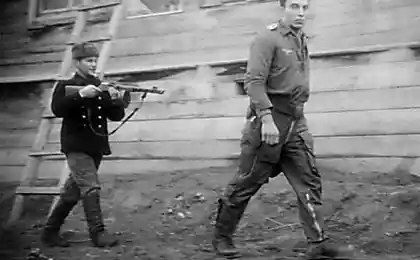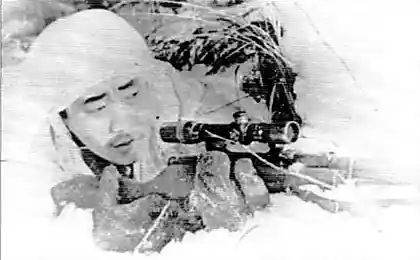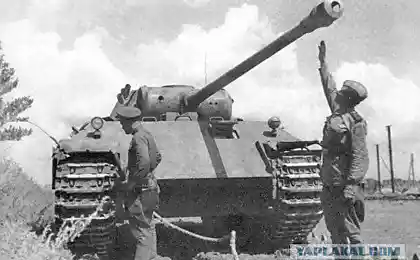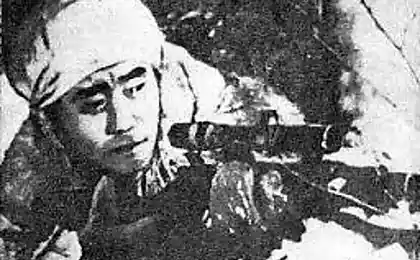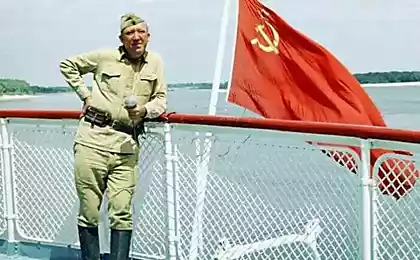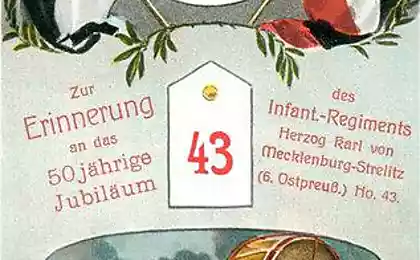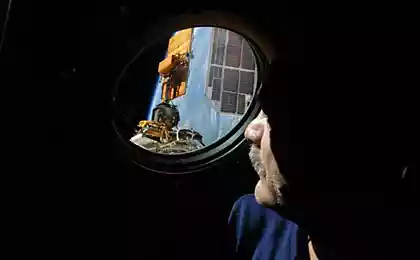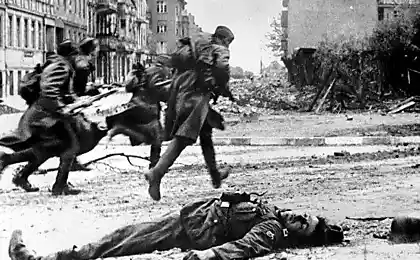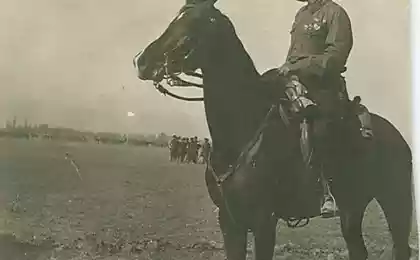1008
Three Romanian regiment
In November 1942, during the Battle of Stalingrad took place one of the last cases of combat use of the cavalry on horseback. Participants of this event was the 4th Cavalry Corps of the Red Army, formed in Central Asia and to September 1942 carried a service in Iran.
Corps commander Lieutenant General Timothy T. Shapkin. During the Civil War podesaul Shapkin fought on the side of white and commanding the Cossack squadrons, involved in the raid by Mamontov red rear. After the defeat of the Don Army and the Bolshevik conquest of the area of the Don Cossacks, in March 1920 Shapkin with its hundreds of Cossacks went to the Red Army for participation in the Soviet-Polish war. During the war he rose from the commander of the brigade commander to hundreds and earned two orders of the Red Banner. In 1921, after the death in combat with the Makhnovists famous division commander of the 14th Cavalry Division Alexander Parkhomenko, he took command of his division. Third Order of the Red Banner Shapkin received for fighting with the robber bands. Shapkina worn curled mustache, ancestors of today's migrant workers have taken over the Budyonny and his mere appearance in some village Basmachi causing panic among entire neighborhood. For the elimination of the last Basmach gangs and capture organizer Basmach movement Imbragim-Shapkin Beck was awarded the Order of the Red Banner of the Tajik SSR.
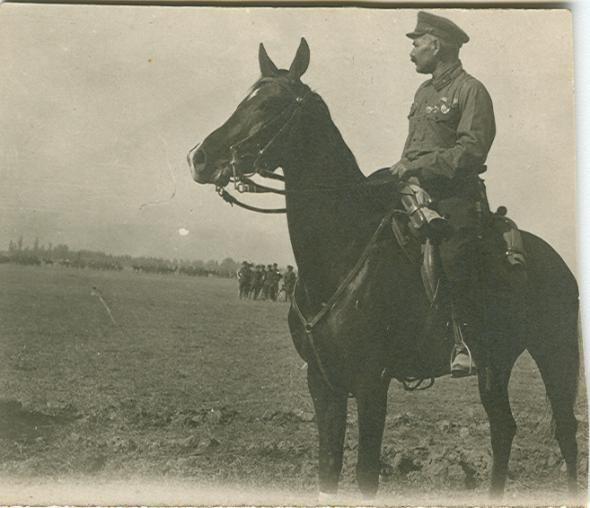
Despite beloofitserskoe past Shapkin in 1938 was accepted into the ranks of the CPSU (b), and in 1940, Corps Commander Shapkina was awarded the rank of lieutenant general.
4th Cavalry Corps was involved in breaking the Romanian defense south of Stalingrad.
Initially it was assumed that the grooms as usual would be taken to the shelter of horses and horsemen on foot will go on the attack on the Romanian trenches. However, the barrage had such an impact on the Romanians that immediately on its completion Romanians got out of the dugouts and fled in panic to the rear. It was then that it was decided to pursue the Romanians traveling on horseback.
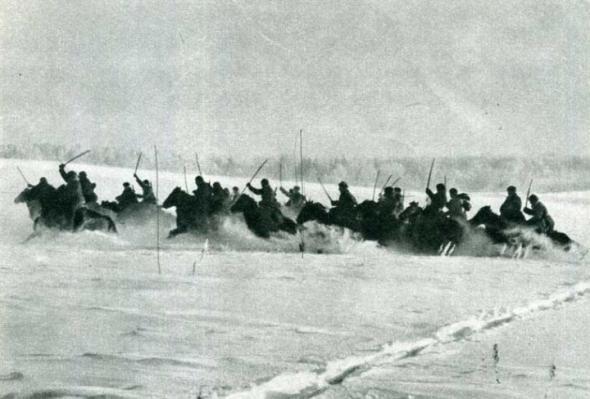
Romania managed not only to catch up but overtake. Two divisions housing - I-81 and I-61 - Coverage of the right and left, and started a real grinder - Three Romanian regiment were chopped in its entirety. Loss of housing were compared with the results achieved meager 81 Division lost 10 men killed and 13 wounded, 61 th - 17 killed and 21 wounded.
Unopposed, troopers took Abganerovo station, where they were captured major trophies over 100 guns, stocks of food, fuel and ammunition.
After the liberation of the station Abganerovo advanced part of the 4th Cavalry Corps Shapkina rapidly developed a large offensive on the town Kotelnikovo and station of the same name. When half the Kotelnikovo was occupied by cavalry, Manstein, fearing the loss of this important item, to find additional forces and threw them into the counter-attack. Under the pressure of superior forces of the enemy motorized and without the support of other parts of Shapkina cavalrymen were forced to retreat. A 81st Division, marching in the vanguard, was surrounded. In this difficult situation the commander Shapkin takes his own risk and responsible decision: forces the body to release his division surrounded, save people. And he succeeded. At nightfall, the earth rumbled under thousands of hooves. The Germans did not expect such a rapid, powerful attacks. They did not have time to recover, their encirclement was creased and torn and division that they were going to destroy or capture, was derived from the environment.
Then Shapkina Corps took part in the liberation of Rostov and Novocherkassk. March 22, 1943 57-year-old general Shapkin died of a stroke.

Timothy T. Shapkin

Source:
Corps commander Lieutenant General Timothy T. Shapkin. During the Civil War podesaul Shapkin fought on the side of white and commanding the Cossack squadrons, involved in the raid by Mamontov red rear. After the defeat of the Don Army and the Bolshevik conquest of the area of the Don Cossacks, in March 1920 Shapkin with its hundreds of Cossacks went to the Red Army for participation in the Soviet-Polish war. During the war he rose from the commander of the brigade commander to hundreds and earned two orders of the Red Banner. In 1921, after the death in combat with the Makhnovists famous division commander of the 14th Cavalry Division Alexander Parkhomenko, he took command of his division. Third Order of the Red Banner Shapkin received for fighting with the robber bands. Shapkina worn curled mustache, ancestors of today's migrant workers have taken over the Budyonny and his mere appearance in some village Basmachi causing panic among entire neighborhood. For the elimination of the last Basmach gangs and capture organizer Basmach movement Imbragim-Shapkin Beck was awarded the Order of the Red Banner of the Tajik SSR.

Despite beloofitserskoe past Shapkin in 1938 was accepted into the ranks of the CPSU (b), and in 1940, Corps Commander Shapkina was awarded the rank of lieutenant general.
4th Cavalry Corps was involved in breaking the Romanian defense south of Stalingrad.
Initially it was assumed that the grooms as usual would be taken to the shelter of horses and horsemen on foot will go on the attack on the Romanian trenches. However, the barrage had such an impact on the Romanians that immediately on its completion Romanians got out of the dugouts and fled in panic to the rear. It was then that it was decided to pursue the Romanians traveling on horseback.

Romania managed not only to catch up but overtake. Two divisions housing - I-81 and I-61 - Coverage of the right and left, and started a real grinder - Three Romanian regiment were chopped in its entirety. Loss of housing were compared with the results achieved meager 81 Division lost 10 men killed and 13 wounded, 61 th - 17 killed and 21 wounded.
Unopposed, troopers took Abganerovo station, where they were captured major trophies over 100 guns, stocks of food, fuel and ammunition.
After the liberation of the station Abganerovo advanced part of the 4th Cavalry Corps Shapkina rapidly developed a large offensive on the town Kotelnikovo and station of the same name. When half the Kotelnikovo was occupied by cavalry, Manstein, fearing the loss of this important item, to find additional forces and threw them into the counter-attack. Under the pressure of superior forces of the enemy motorized and without the support of other parts of Shapkina cavalrymen were forced to retreat. A 81st Division, marching in the vanguard, was surrounded. In this difficult situation the commander Shapkin takes his own risk and responsible decision: forces the body to release his division surrounded, save people. And he succeeded. At nightfall, the earth rumbled under thousands of hooves. The Germans did not expect such a rapid, powerful attacks. They did not have time to recover, their encirclement was creased and torn and division that they were going to destroy or capture, was derived from the environment.
Then Shapkina Corps took part in the liberation of Rostov and Novocherkassk. March 22, 1943 57-year-old general Shapkin died of a stroke.

Timothy T. Shapkin

Source:


